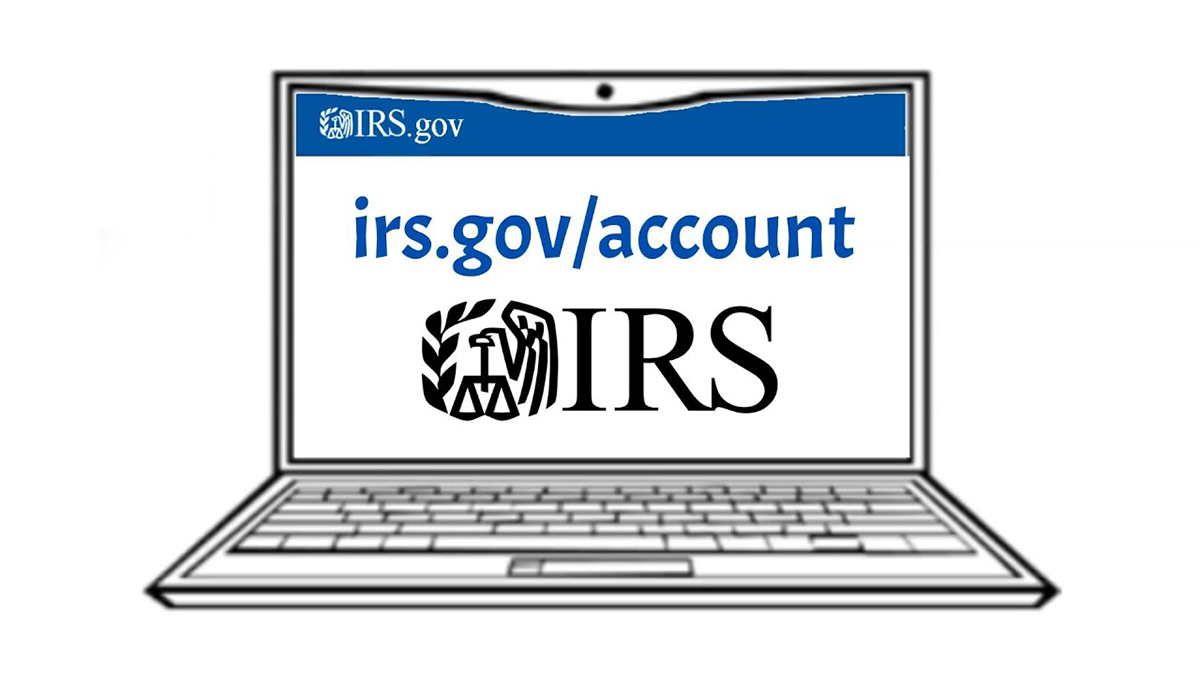

Finance
How To Cancel An Amended Tax Return
Published: October 28, 2023
Learn how to cancel an amended tax return and manage your finances effectively with our step-by-step guide. Simplify the tax process and save time and money.
(Many of the links in this article redirect to a specific reviewed product. Your purchase of these products through affiliate links helps to generate commission for LiveWell, at no extra cost. Learn more)
Table of Contents
Introduction
Amending a tax return can be a complex process, but what happens if you need to cancel an amended tax return? Whether it’s due to a mistake, new information, or a change in your circumstances, canceling an amended tax return requires careful consideration and proper procedures. In this article, we will guide you through the steps to cancel an amended tax return and discuss the potential consequences you may face.
When you file your original tax return, you do your best to ensure accuracy. However, sometimes mistakes happen or new information comes to light after filing. In such cases, taxpayers have the option to amend their tax returns to correct errors or provide additional information. However, just as you can amend a tax return, there may be circumstances where you need to cancel or undo that amendment.
Cancelling an amended tax return typically occurs when you realize that the original return was correct or when the changes made in the amendment were inaccurate or unnecessary. It’s important to note that once you submit an amended tax return to the IRS, it becomes an official record. Therefore, canceling an amended tax return involves specific steps and considerations to ensure accuracy and compliance.
It’s crucial to thoroughly review your amended tax return before deciding to cancel it. Look for any errors or discrepancies in the changes made, and carefully weigh the potential consequences of canceling the amendment. Depending on the circumstances, you may not always need to cancel the entire amendment; there may be specific changes within the amendment that require cancellation.
In the following sections, we will explore the process of canceling an amended tax return, including the necessary steps and potential repercussions you may encounter. By understanding this process, you can navigate the complexities of amending your tax return and ensure compliance with the IRS.
Understanding Amended Tax Returns
Before diving into the process of canceling an amended tax return, it’s helpful to have a clear understanding of what an amended tax return entails. An amended tax return, as the name suggests, is a revised version of your original tax return. It is used to correct any errors or provide additional information that was not included in the initial filing.
There are various reasons why taxpayers may need to file an amended tax return. Some common scenarios include:
- Correction of errors: If you discover that you made a mistake on your original tax return, such as an incorrect amount or omitted information, filing an amended return allows you to rectify those errors.
- Receiving missing forms: If you receive a tax form, such as a W-2 or 1099, after filing your original return, you will need to amend your return to include that additional income or deduction.
- Changes in tax laws: Sometimes, tax laws or regulations change after you have already filed your return. If these changes affect your tax situation, you may need to file an amended return to reflect those updates.
- Amendments to other tax documents: If you discover that another tax document, such as a Schedule A or Schedule C, needs to be adjusted or revised, you can use an amended return to make the necessary changes.
It’s important to note that not all changes require filing an amended tax return. Minor math errors or inaccurate typos, for example, can be corrected by the IRS without filing an amendment. Additionally, if the IRS identifies an error on your return, they may make corrections and send you an updated notice.
When filing an amended return, you will need to use Form 1040X, which is the official document for amending federal income tax returns. Form 1040X allows you to provide the corrected or additional information, as well as a detailed explanation for the changes you are making. It’s crucial to fill out this form accurately and provide sufficient documentation to support your amendments.
Understanding the purpose and process of amending a tax return is essential when it comes to canceling an amended tax return. By being familiar with the reasons why taxpayers file amendments, you can better assess whether canceling your amended return is necessary in your specific situation. In the next section, we will explore the reasons why you might need to cancel an amended tax return.
Reasons for Cancelling an Amended Tax Return
While amending a tax return is a common practice, canceling an amended tax return is less common but still necessary in certain situations. Here are some key reasons why you might need to cancel an amended tax return:
- Mistake or error: One of the main reasons for canceling an amended tax return is discovering that the changes made in the amendment were incorrect. This could be due to a miscalculation, misunderstanding of the tax law, or other factors that led to an inaccurate amendment. If you realize that the amendment contains errors, it’s crucial to cancel it and correct the mistake.
- Unnecessary changes: Sometimes, taxpayers amend their tax returns based on new information or circumstances, only to discover later that those changes were unnecessary. For example, you may have initially thought you were eligible for a certain deduction, but upon further research or consultation with a tax professional, you realize that you don’t qualify. In such cases, it’s best to cancel the amendment and revert to your original return.
- Erroneous amended return: In rare instances, an amended tax return may be filed by an unauthorized person or due to fraudulent activity. If you suspect that a fraudulent or unauthorized amendment has been filed in your name, it’s imperative to cancel it and report the incident to the IRS.
- Original return was correct: It’s possible that upon careful review of your original tax return, you realize that it was accurate and there is no need for any amendments. Perhaps you initially thought there were errors or missing information, but upon further evaluation, you determine that your original return was correct. In this case, canceling the amended return is the appropriate course of action.
- Change in circumstances: Another reason for canceling an amended tax return is a change in your circumstances that renders the amended return unnecessary or inaccurate. For example, if you filed an amended return to claim a deduction for a business expense, but later decided to discontinue the business, canceling the amendment becomes necessary.
It’s important to carefully consider the reasons for canceling an amended tax return and evaluate whether it’s appropriate in your specific situation. Cancelling an amended return requires proper documentation, following specific procedures, and ensuring compliance with the IRS guidelines, which we will discuss in the next section.
Steps to Cancel an Amended Tax Return
If you determine that canceling your amended tax return is necessary, it’s important to follow the proper steps to ensure accuracy and compliance. Here’s a step-by-step guide on how to cancel an amended tax return:
- Gather all documentation: Collect all the necessary documents related to your amended tax return, including copies of the amended return itself, any supporting documents, and any correspondence you have received from the IRS regarding the amendment.
- Review the amended return: Carefully review the amended return to identify the specific changes that need to be cancelled. Determine whether the entire amendment needs to be cancelled or if only certain changes within the amendment are incorrect or unnecessary.
- Complete Form 1040X: Fill out a new Form 1040X, making sure to indicate that you are canceling a previously filed amendment. Provide your personal information, including your name, Social Security number, and the tax year you are amending.
- Explanation of changes: In Part III of Form 1040X, explain the reason for canceling the amended return. Clearly state the inaccurate or unnecessary changes that were made and the reasons for their cancellation.
- Attach supporting documents: Include any relevant supporting documents that prove the need to cancel the amended return. This could include documentation that supports the accuracy of the original return or shows that the changes made in the amendment were incorrect.
- Submit the cancellation: Mail the completed Form 1040X to the appropriate IRS address specified in the instructions for Form 1040X. It’s important to keep copies of all documents and send the cancellation via certified mail to have proof of mailing.
- Follow up with the IRS: After mailing the cancellation, monitor your correspondence from the IRS. It is possible that they may have already processed your original return or the amended return before receiving the cancellation. If you receive any notices or requests for payment related to the amended return, respond promptly and provide a copy of the cancellation documentation.
It’s crucial to ensure that all steps are completed accurately and with the necessary documentation. If you have any uncertainty about the cancellation process, it may be advisable to consult a tax professional or seek guidance from the IRS directly.
Next, we will discuss what to do if you still need to make changes to your tax return after canceling the amended return.
Filing a New Amended Tax Return
If you cancel an amended tax return but still need to make changes to your original tax return, you have the option to file a new amended tax return. Here’s what you need to know:
- Evaluate the changes: Review the changes you need to make to your original tax return and determine if they meet the criteria for filing an amended return. Consider whether the changes are due to corrected errors, additional information, or changes in tax laws.
- Use Form 1040X: As with any amended tax return, you will need to use Form 1040X to file the new amendment. Fill out the form accurately, providing the necessary explanations for the changes being made.
- Attach supporting documentation: Include any supporting documents that validate the changes being made. This could include updated forms, statements, or receipts that were not included with your original return.
- Follow the same submission process: Submit the new amended tax return using the same process outlined in the previous section. Be sure to keep copies of all documents and send them via certified mail for proof of mailing.
- Label the new amendment: On Form 1040X, indicate that it is a new amended return by marking the box in Part I that states “Amended Return.” This will help distinguish it from the previously cancelled amendment.
- Monitor correspondence from the IRS: Keep track of any notices or correspondence you receive from the IRS regarding the new amended return. Respond promptly to any requests for further documentation or clarification.
- Keep thorough records: Maintain copies of all documents related to the new amended return, including the amended return itself, supporting documentation, and any correspondence with the IRS. These records will be useful for future reference or in the event of an audit.
Filing a new amended tax return allows you to make the necessary changes to your original return, while also providing accurate and updated information to the IRS. It’s important to ensure that all changes are accurately reflected on the new amendment and supported by proper documentation.
However, keep in mind that filing multiple amended returns can increase the likelihood of being audited by the IRS. Therefore, it’s crucial to thoroughly review and verify all changes before submitting a new amendment to minimize the risk of errors or discrepancies.
In the next section, we will discuss the potential consequences of cancelling an amended tax return.
Potential Consequences of Cancelling an Amended Tax Return
While canceling an amended tax return is sometimes necessary, it’s important to consider the potential consequences that may arise from this action. Here are some key points to keep in mind:
- Timeline implications: Cancelling an amended tax return means reverting back to your original tax return. If the cancellation occurs after the original due date for the return, you may face penalties and interest for any additional tax liability.
- Refunds and payments: If your original return resulted in a refund, canceling the amendment may impact your refund status. Similarly, if you owe additional taxes based on the amendment, you will need to address the payment promptly to avoid penalties and interest.
- Audit potential: Canceling and filing multiple amended returns can increase the likelihood of being selected for an audit by the IRS. The larger the number of amendments, the higher the scrutiny of your tax situation. It’s crucial to ensure the accuracy and supporting documentation of any changes made.
- State tax considerations: Depending on the state in which you reside, canceling an amended return may have implications for your state tax liability. It’s important to review the specific state tax regulations and consult with a tax professional if needed.
- Documentation and record-keeping: Canceling an amended return requires proper documentation and record-keeping. It’s essential to maintain copies of all relevant documents, including the cancellation request, original tax return, amended return, and any correspondence with the IRS. These records will be invaluable in case of future inquiries or audits.
- IRS correspondence: After canceling an amended return, monitor any correspondence received from the IRS. They may have already processed the original or amended return before receiving the cancellation. Respond promptly to any requests for information or further clarification and provide copies of the cancellation documentation as necessary.
- Professional guidance: If you are uncertain about the potential consequences or implications of cancelling an amended tax return, it may be wise to seek guidance from a tax professional. They can provide personalized advice based on your specific situation, ensuring compliance while minimizing any negative repercussions.
It’s important to carefully consider the potential consequences and weigh them against the reasons for canceling an amended tax return. By staying informed and taking appropriate action, you can navigate the process effectively.
Next, we will conclude with a summary of the key points discussed in this article.
Conclusion
Cancelling an amended tax return is a process that requires careful consideration and adherence to proper procedures. Whether it’s due to a mistake, unnecessary changes, or other circumstances, canceling an amended tax return is necessary in certain situations to ensure accuracy and compliance with the IRS.
Understanding the reasons for amending a tax return and the potential consequences of canceling an amendment are essential in making informed decisions. By thoroughly reviewing your amended return and assessing the accuracy and necessity of the changes, you can determine whether canceling the amendment is the appropriate course of action.
Should you decide to cancel an amended tax return, following the proper steps is crucial. Gathering all relevant documentation, filling out Form 1040X accurately, explaining the reasons for cancellation, and submitting the cancellation to the IRS are essential components of the process.
If you still need to make changes to your original tax return after canceling the amended return, filing a new amended tax return is an option. However, filing multiple amendments may increase your chances of being audited, so it’s important to review and verify changes carefully before submitting a new amendment.
Canceling an amended tax return may have consequences, such as potential penalties, interest, and increased audit potential. It’s important to address any tax liabilities or refunds promptly and maintain thorough documentation for reference and record-keeping purposes.
If you have any uncertainties or concerns about the cancelation process or potential consequences, seeking guidance from a tax professional can provide valuable insights and ensure compliance with IRS regulations.
By understanding the process of canceling an amended tax return and considering the specific circumstances, you can navigate the complexities of amending your tax return while maintaining accuracy and compliance with the IRS.














